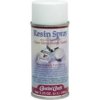Aerdan
New Member
I got all my stuff for the resin stage. How am I going to do it? I bought: Fiberglass Repair Kit, 2 packs of Fiberglass Cloth 3M, and all my brushes. Do I put the cloth on the whole thing or in the inside? cause I see poepl only resin the outside and sometimes use the cloth on the inside..


